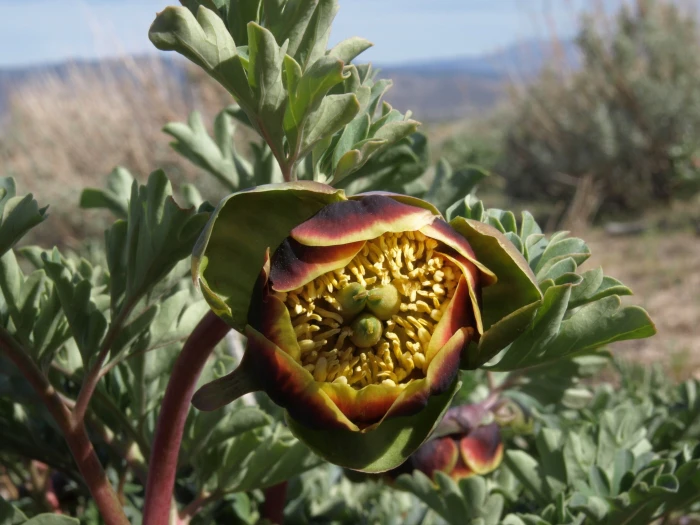Brown’s Peony
(Paeonia brownii)
Brown’s Peony (Paeonia brownii)
/
/

Jim Morefield
CC BY 4.0
Image By:
Jim Morefield
Recorded By:
Copyright:
CC BY 4.0
Copyright Notice:
Photo by: Jim Morefield | License Type: CC BY 4.0 | License URL: http://creativecommons.org/licenses/by/4.0/ | Rights Holder: Jim Morefield | Publisher: iNaturalist | Date Created: 2014-04-23T15:47:13-07:00 |






















Estimated Native Range
Climate Requirements for Gunpo, Korea, Republic Of
| This Plant | Your Site | Plant Suitability for Your Location | ||
|---|---|---|---|---|
| • Precipitation | 5" - 77" | 51" | Aquatic | Aquatic |
| • High Temp. | 65°F - 100°F | 84°F | Your summer temperatures are normal for this plant. | Excellent |
| • Low Temp. | 1°F - 42°F | 19°F | Your winter temperatures are normal for this plant | Excellent |
This plant may not grow well at your location - your precipitation is too high.
Summary
Paeonia brownii, commonly known as Brown’s peony, is a herbaceous perennial native to the Intermountain West and Pacific Northwest regions of the United States. It is typically found in dry pine forests, sagebrush flats, and aspen stands at elevations ranging from 656 to 9843 feet. This species reaches a modest height of 12 to 18 inches and spreads about the same. Brown’s peony is characterized by its steely-gray, fleshy leaves and small, nodding maroon flowers that bloom from March to June. The flowers are not particularly showy, but they are unique and have a subtle charm. The plant has a thick rootstock that stores nutrients, allowing it to survive the dry summer conditions of its native habitat.
Despite its understated appearance, Brown’s peony can be a fascinating addition to native plant gardens and xeriscapes due to its drought tolerance and historical medicinal uses. It thrives in well-drained soils and requires little water once established, making it suitable for rock gardens or dry borders. However, it is rarely cultivated, partly because of its less conspicuous flowers and the challenge of growing it outside its natural setting. Gardeners interested in native plants or historical medicinal flora might find it a rewarding challenge. Brown’s peony was used by Indigenous peoples to treat lung illnesses and other ailments, though it is not commonly used in modern herbal medicine.CC BY-SA 4.0
Despite its understated appearance, Brown’s peony can be a fascinating addition to native plant gardens and xeriscapes due to its drought tolerance and historical medicinal uses. It thrives in well-drained soils and requires little water once established, making it suitable for rock gardens or dry borders. However, it is rarely cultivated, partly because of its less conspicuous flowers and the challenge of growing it outside its natural setting. Gardeners interested in native plants or historical medicinal flora might find it a rewarding challenge. Brown’s peony was used by Indigenous peoples to treat lung illnesses and other ailments, though it is not commonly used in modern herbal medicine.CC BY-SA 4.0
Plant Description
- Plant Type: Herb
- Height: 1-3 feet
- Width: 1-3 feet
- Growth Rate: Moderate
- Flower Color: Brown
- Flowering Season: Spring, Summer
- Leaf Retention: Deciduous
Growth Requirements
- Sun: Full Sun, Part Shade
- Water: Medium
- Drainage: Medium
Common Uses
Low Maintenance, Rock Garden
Natural Habitat
Native to dry pine forests, sagebrush flats, and aspen stands within the Intermountain West and Pacific Northwest regions
Other Names
Common Names: Native Peony, Western Peony
Scientific Names: Paeonia brownii
GBIF Accepted Name: Paeonia brownii